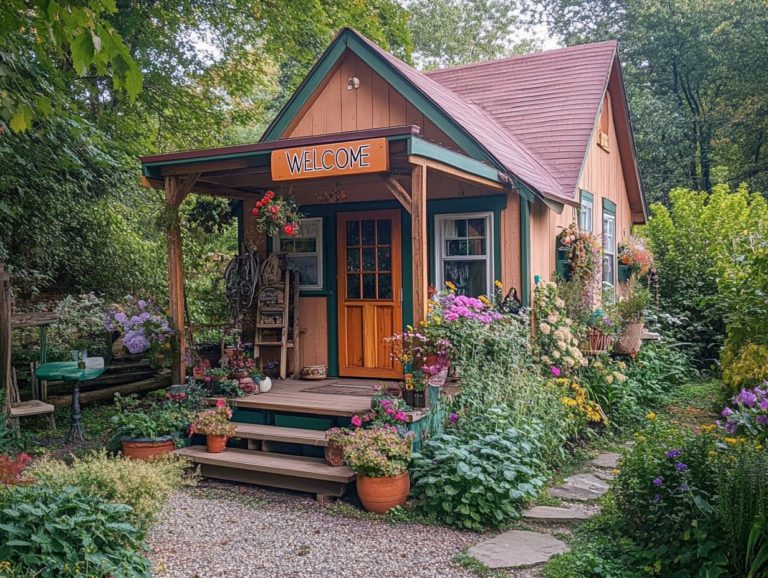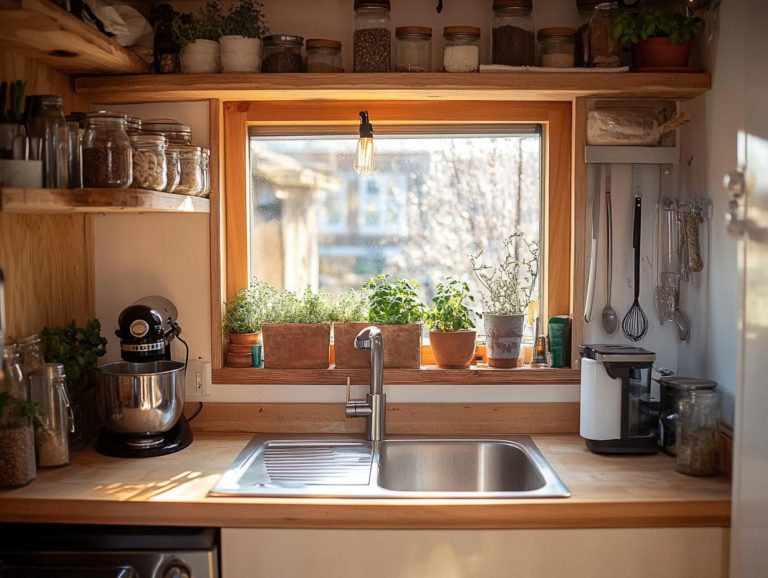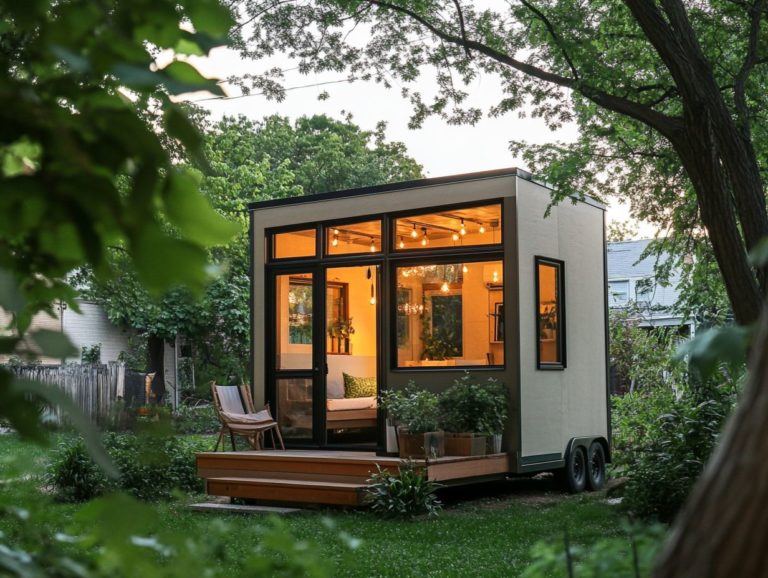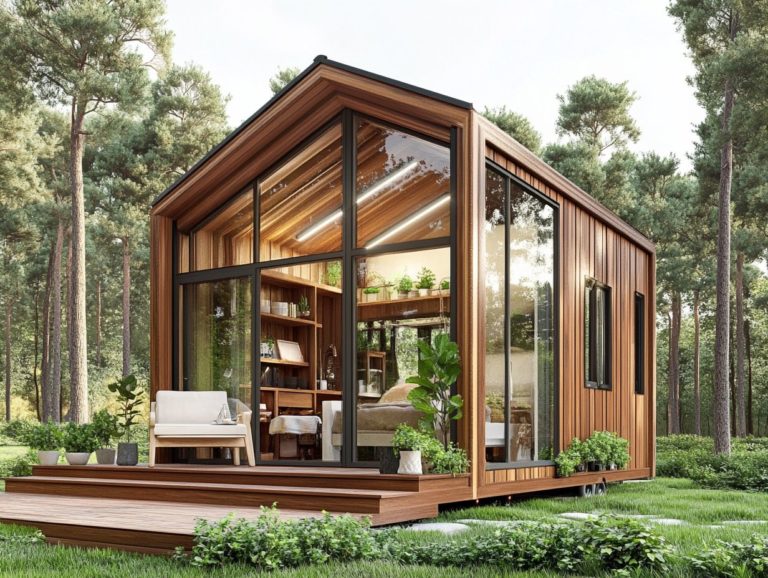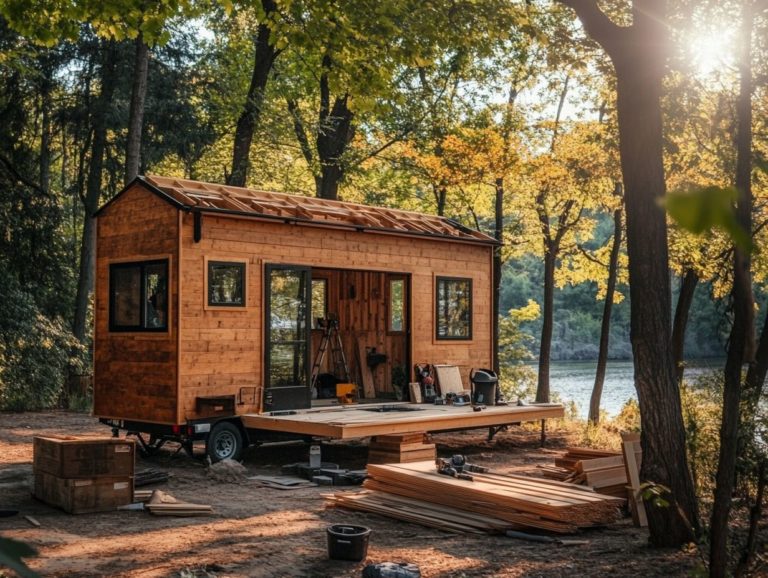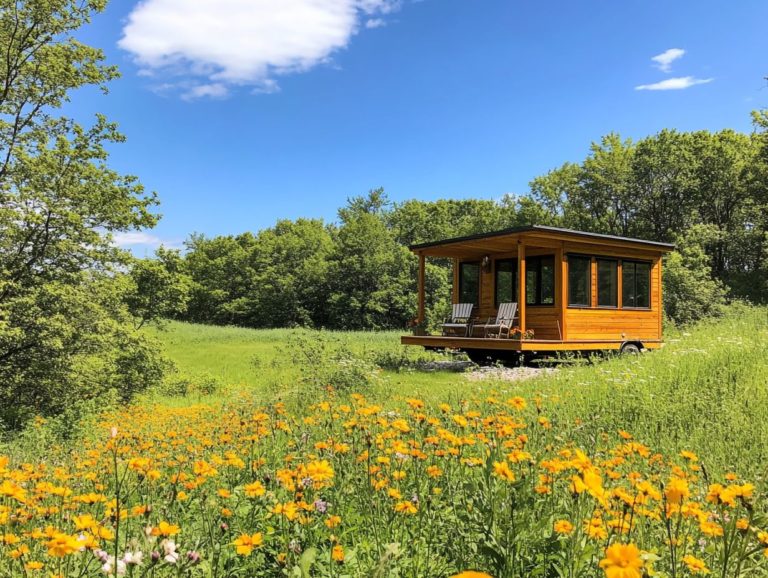What Are the Benefits of Going Tiny?
Tiny living transcends mere trendiness; it s a lifestyle choice that resonates deeply with those seeking simplicity and sustainability.
This article delves into the myriad benefits of downsizing, from financial savings to a significantly reduced environmental footprint. It also highlights crucial considerations you should weigh before embarking on this journey to a smaller space, along with practical tips to facilitate your transition into a minimalist lifestyle.
Could tiny living be the perfect match for your aspirations? Imagine a lifestyle that prioritizes simplicity and community. Let s explore the exciting possibilities together!
Contents [hide]
Key Takeaways:
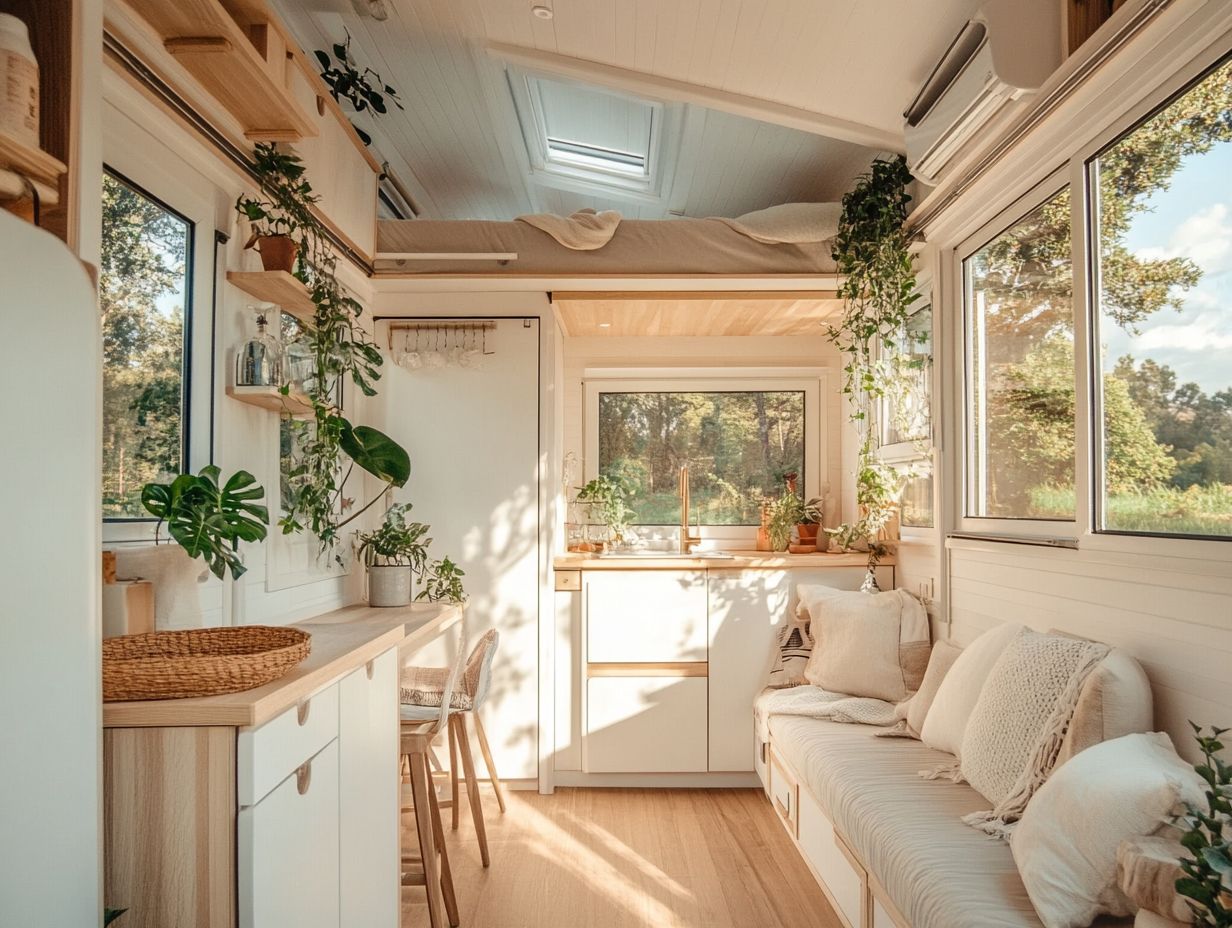
- Save money and reduce financial stress by going tiny – lower mortgage/rent, utility, and maintenance costs.
- Embrace a more eco-friendly lifestyle through reduced energy consumption and carbon footprint.
- Simplify your life and focus on what truly matters by downsizing and decluttering your living space.
Defining Tiny Living and Its Appeal
Tiny living signifies a transformative shift in how you view your living spaces. It highlights the benefits of smaller, more efficient homes that encourage a minimalist lifestyle and pave the way for financial freedom.
As the tiny house movement gains momentum across the United States, you may find yourself captivated by the charm of downsizing. The focus shifts from mere square footage to enhancing your quality of life and strengthening community bonds.
With options such as micro-houses and customizable designs, tiny homes present a fresh perspective on affordable housing, enabling you to declutter your life and fully embrace simplicity in your everyday routine. To learn more about the concept, check out what is a tiny house and why choose one?
Benefits of Going Tiny
The benefits of embracing a tiny home lifestyle are multifaceted, offering financial, environmental, and lifestyle advantages that resonate profoundly with modern homeowners in search of sustainable living solutions. You ll experience significant reductions in utility costs while enjoying the beauty of eco-friendly materials throughout your space.
The perks of tiny living go beyond just the square footage. As more individuals choose this lifestyle, tiny home communities are emerging as a compelling trend, fostering deeper connections and shared experiences among residents. To learn more about the advantages, check out the benefits of tiny house living.
Financial Advantages
One of the most compelling reasons to consider tiny living is the many financial benefits it presents, making it a captivating alternative to traditional homes. By downsizing to a tiny house, you can significantly lower your mortgage expenses sometimes even eliminating them entirely. This opens the door to greater financial freedom and the opportunity to enhance your retirement savings.
The reduced maintenance costs associated with tiny homes further amplify these financial advantages, enabling you to allocate more funds toward experiences rather than possessions.
For example, average mortgage payments for a typical home can range from $1,200 to $2,000 per month, while many tiny homes come at much lower price points, leading to monthly payments as low as $500 or, in some cases, no payments at all if you purchase outright.
Utility expenses also take a nosedive; tiny living typically results in bills that are a fraction of those for larger homes, with some homeowners reporting savings of up to 70%.
These substantial reductions in monthly obligations not only empower you to invest more in your retirement accounts but also encourage you to pursue your passions be it travel, education, or simply savoring life without the looming burden of excessive debt.
Environmental Benefits
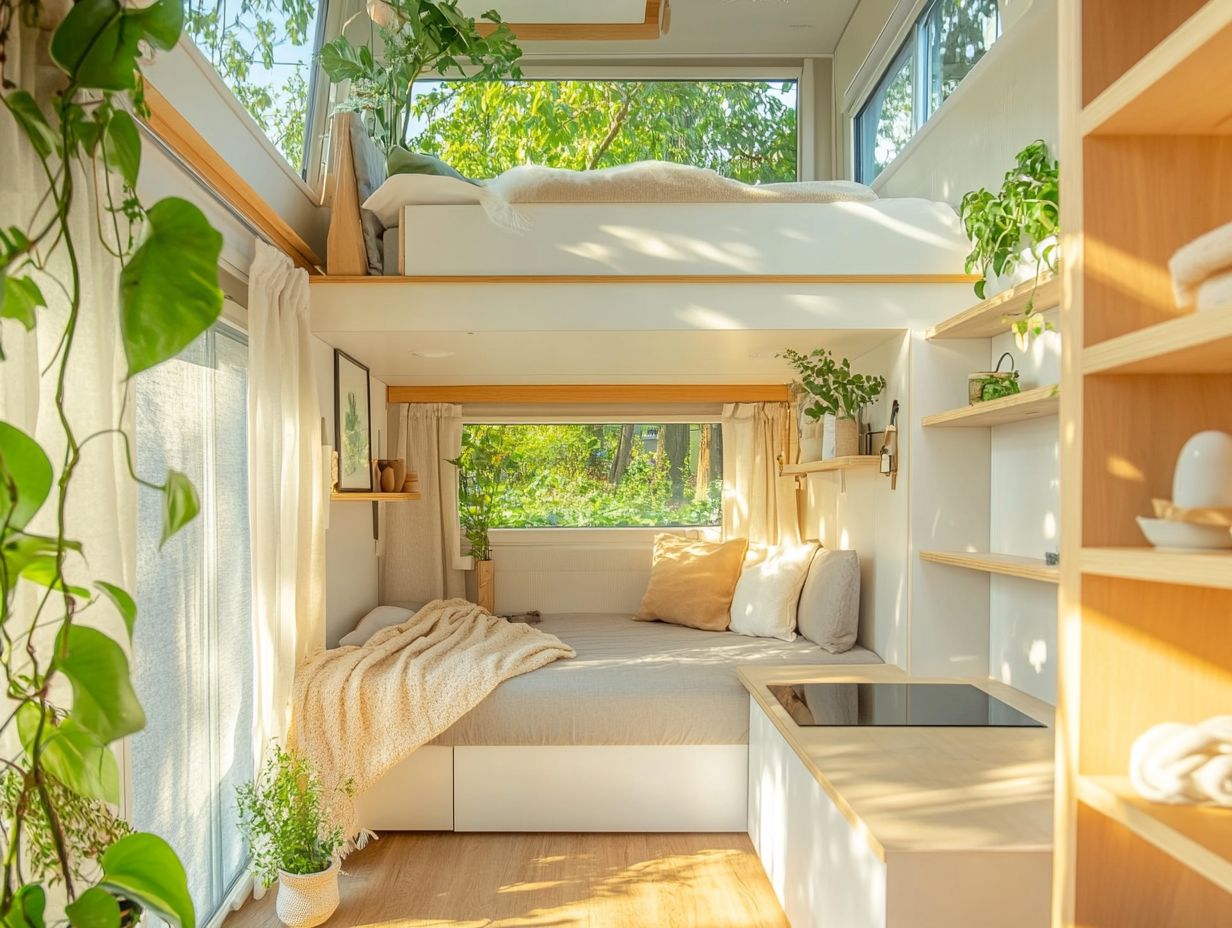
Tiny living offers significant environmental benefits. These compact homes are designed to reduce your carbon footprint and promote sustainability.
By opting for eco-friendly materials, tiny houses minimize the environmental impact of traditional construction. They emphasize energy efficiency and resource conservation.
As more homeowners recognize the importance of caring for the environment, choosing to live in a tiny house shows your commitment to protecting the planet for future generations.
Living in a tiny home means lower energy use. Smaller spaces need less heating and cooling, saving you money!
Many tiny homes incorporate renewable energy sources, like solar panels, which further reduces reliance on fossil fuels.
Tiny living encourages a simpler lifestyle that champions minimalism. It inspires you to make conscious choices about your consumption habits.
By integrating sustainable practices into your everyday life like water conservation and waste reduction you contribute to a larger movement toward ecological responsibility. This shows that even small changes can have a big impact on the environment.
Simplified Lifestyle
Choosing to live in a tiny house promotes a simplified lifestyle, encouraging you to embrace minimalism and prioritize experiences over possessions.
This shift helps you cut through the clutter and enjoy a more vibrant life! You learn to downsize your belongings and curate your living space with intention.
With an emphasis on quality over quantity, tiny house living fosters deeper connections within your community. It allows for a more profound appreciation of life s simple pleasures.
By scaling down, you may find yourself more present in your daily life. This brings a sense of calm and contentment that can be hard to find in a larger, more chaotic environment.
The move toward minimalism reduces stress associated with excessive material possessions. It nurtures your emotional well-being, allowing for a clearer mind and sharper focus on what truly matters.
As you connect with like-minded neighbors, you cultivate supportive communities that enhance social ties. This opens up opportunities for collaboration and shared experiences, enriching your life.
Considerations Before Going Tiny
Thinking about tiny living? Consider key factors like space, storage, and how adaptable you are to a smaller home.
Moving into a tiny house often demands innovative strategies for organizing your belongings. Limited square footage requires a thoughtful approach to maximizing every inch.
It’s vital to understand these challenges from the start, especially if you’re seeking the freedom that comes with mobile living. It can profoundly influence your daily routines and lifestyle choices.
Space and Storage
Space and storage are crucial elements to think about when making the leap to tiny living. Maximizing space efficiency is essential for a comfortable and functional lifestyle.
As you embark on this journey, you may struggle to fit your everyday essentials into a limited area while wanting to maintain a sense of spaciousness.
By incorporating full-size appliances into cleverly designed cabinetry, you can enjoy the conveniences of a traditional home without sacrificing precious square footage.
Innovative solutions, such as vertical shelving, under-bed storage bins, and fold-down tables, allow you to transform your living areas, blending practicality with aesthetics.
Consider using ottomans with hidden compartments or wall-mounted desks; these thoughtful design choices support both your work and leisure activities. They show how smart design can elevate your overall living experience.
Adjusting to a Smaller Living Space
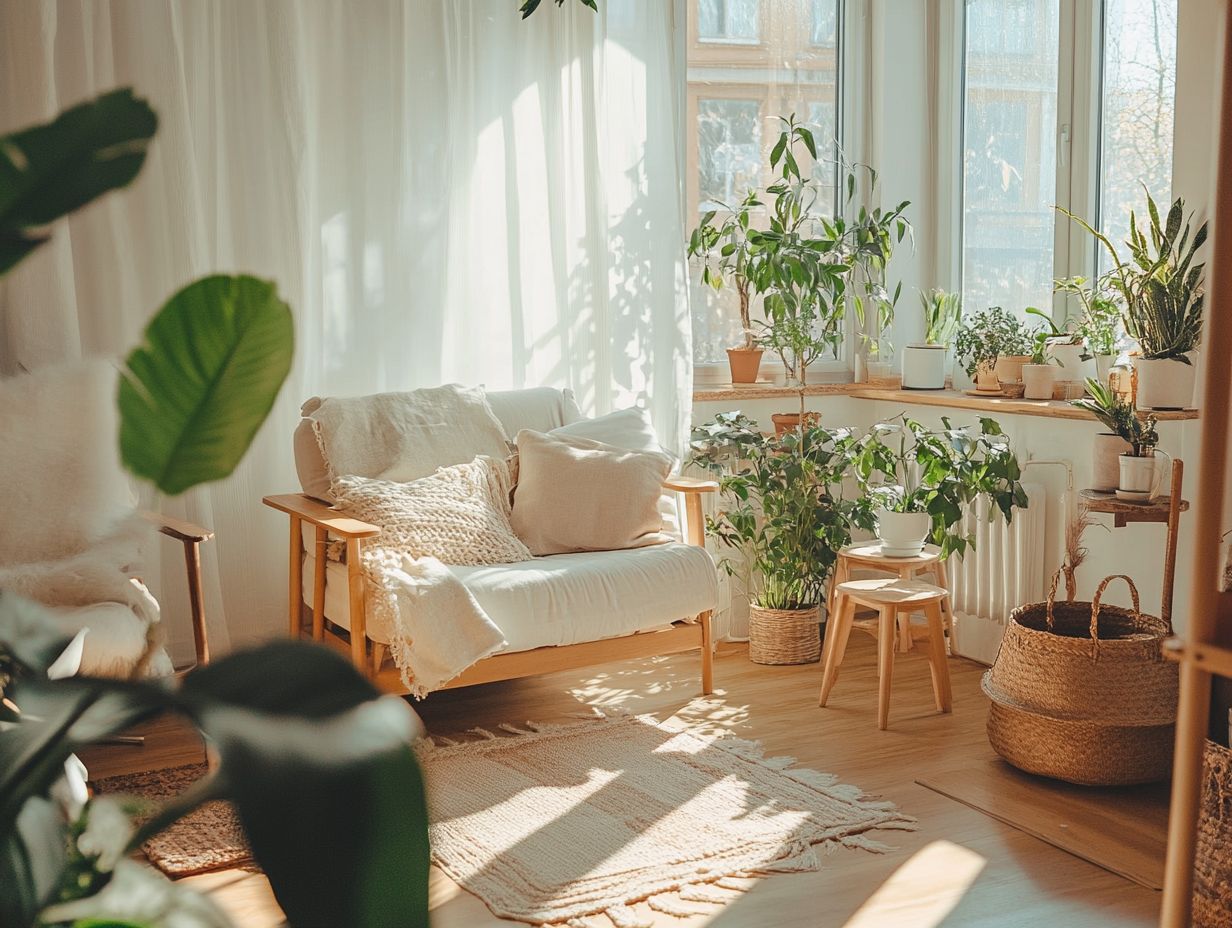
Adjusting to a smaller living space presents its own set of unique challenges, encouraging you to think about less stuff and more space. This transition often sparks a journey of self-discovery, prompting you to reassess your priorities and let go of items that no longer serve a purpose.
Embracing this change can cultivate a profound sense of liberation and clarity, ultimately enhancing your quality of life. Many find joy in this newfound simplicity, recalling how releasing excess clutter has allowed them to reconnect with forgotten passions, such as painting and hiking.
Adopting strategies like periodic decluttering or the ‘one in, one out’ rule meaning for every new item you bring home, you should remove an old one can make this transformation smoother. Others share heartwarming stories of how tiny living has strengthened relationships, as families enjoy more quality time together in their cozy spaces.
This lifestyle encourages creativity in both decorating and organization, turning each square foot into a canvas that reflects cherished memories and personal growth.
How to Transition to Tiny Living
Transitioning to tiny living calls for careful planning and organization, starting with actionable tips for downsizing and simplifying your lifestyle. Whether you re moving into a tiny home community or embracing the freedom of mobile living, this journey demands a strategic approach to letting go of possessions and optimizing your new space.
By making intentional choices and adopting mindful practices, you can navigate this significant life change with confidence and ease.
Tips for Downsizing and Simplifying
Effective downsizing and simplifying are essential for successfully transitioning to tiny living, and several practical tips can guide you through this process with ease. Start by prioritizing your belongings assess their value and necessity. This intentional approach helps you keep only those items that genuinely enhance your life.
Engaging with a supportive tiny home community can also ignite creativity and motivation as you embark on this transformative journey. Another smart strategy is to conduct a thorough inventory of your possessions, helping you pinpoint items that no longer serve a purpose.
Consider applying the one-year rule: if you haven’t used an item in the past twelve months, it might be time to let it go. Beyond these practical tactics, immersing yourself in a community of fellow tiny living enthusiasts can foster a sense of belonging and shared experiences, making the downsizing process feel less daunting.
These connections provide invaluable advice, emotional support, and fresh perspectives, turning what could feel like a solitary task into a vibrant collaborative adventure.
Is Tiny Living Right for You?
Determining whether tiny living is the right fit for you requires some serious introspection and an understanding of the lifestyle benefits it offers, all while keeping your personal goals and values in mind. If you’re pursuing financial freedom and want to forge stronger community connections, the minimalist charm of tiny homes might just captivate you.
It s essential to evaluate your comfort level with downsizing and whether you’re ready to embrace a new way of living. This transition encourages you to reflect on your unique lifestyle and preferences.
Consider how the time you save by maintaining a smaller space can lead to financial savings and reduced stress. If you’re curious about the transition, check out what to expect when going tiny. Living in close-knit communities fosters social interactions that often feel absent in larger, more isolated environments.
It’s vital to think about your individual needs workspace, family size, and recreational preferences to truly assess if adopting a minimalist lifestyle aligns with your aspirations. As you weigh these factors, you’ll find that tiny living can not only simplify your existence but also enrich your community life in meaningful ways.
Frequently Asked Questions
Welcome to the Frequently Asked Questions section! Here, you’ll find answers to common inquiries about tiny living that can help you on your journey.
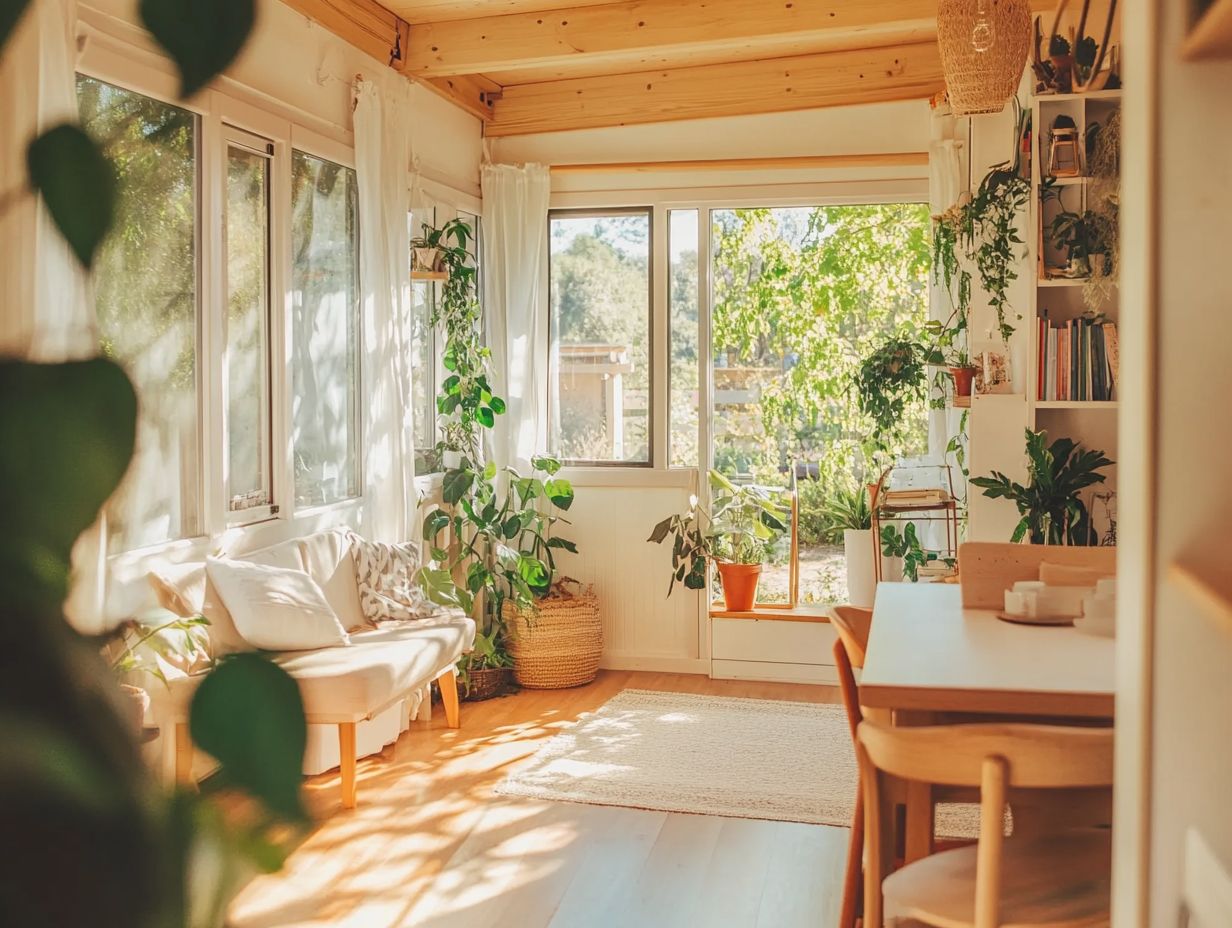
Ready to embrace tiny living? Start your journey today!
Discover the Amazing Benefits of Tiny Living!
The benefits of going tiny include:
- Reduced living expenses: Tiny homes are much more affordable than traditional homes, making it easier to save money and live within your means.
- Minimal effect on the environment: With a smaller living space, you’ll have a smaller carbon footprint (the amount of carbon dioxide emissions caused by your lifestyle) and use fewer resources.
- More flexibility: Tiny homes can be built on wheels, allowing you to easily move and travel without leaving your home behind.
- Less maintenance: With less square footage, you’ll spend less time and money on cleaning and upkeep.
- Live a simpler life: Going tiny forces you to declutter and live with only the essentials, leading to a simpler and less stressful lifestyle.
- Creative design: With limited space, you’ll have to get creative with your design and use of space, resulting in a unique and personalized home.
Can I Save Money by Going Tiny?
Yes, one of the main benefits of going tiny is reduced living expenses. Tiny homes are much more affordable than traditional homes, both in terms of upfront costs and ongoing expenses.
With a smaller mortgage or no mortgage at all, you’ll have more money to save, invest, or spend on experiences.
Is Living in a Tiny Home Environmentally Friendly?
Yes, tiny homes have little effect on the environment. With a smaller living space, you’ll use fewer resources and have a smaller carbon footprint.
Many tiny homes are built with eco-friendly materials and utilize renewable energy sources, making them even more environmentally friendly.
What Are the Challenges of Going Tiny?
Some challenges of going tiny include:
- Limited space: Living in a tiny home may require you to downsize and declutter, which can be challenging for some people.
- Zoning laws: Depending on where you live, there may be zoning laws or regulations that restrict the placement and use of tiny homes.
- Adjusting to a smaller living space: It may take some time to adjust to living in a smaller space, especially if you are used to having more room.
- Building and design limitations: Due to the small size, there may be limitations on the design and layout of your tiny home.
How Can I Make a Tiny Home Feel Spacious?
To make a tiny home feel more spacious, you can:
- Optimize storage: Use creative storage solutions to make the most of your space and keep it clutter-free.
- Utilize multi-functional furniture: Choose furniture that serves multiple purposes, such as a sofa that can also be a bed.
- Maximize natural light: Use large windows and light colors to make your tiny home feel brighter and more open.
- Utilize outdoor space: If your tiny home has a deck or patio, use this outdoor space to extend your living area.
Is Going Tiny Right for Everyone?
Going tiny isn t for everyone, and that s okay! It s crucial to assess your needs before making this significant lifestyle change.
Some people may find the limited space and lifestyle changes challenging, while others may thrive in a tiny home environment.

